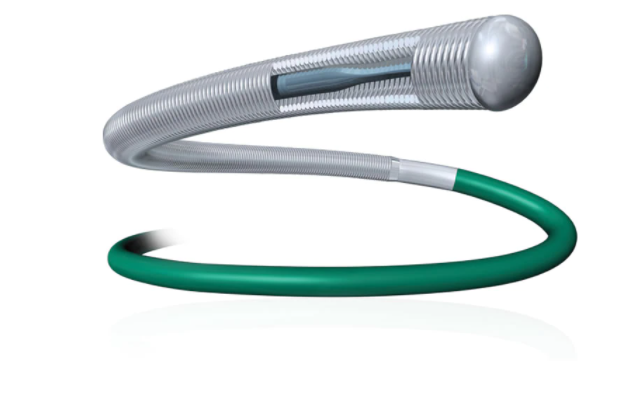INDICATIONS FOR USE
The Porter Guidewires are intended for use in the coronary and peripheral vasculature.
CONTRAINDICATIONS
The Porter Guidewire is not intended for use in the cerebral vasculature. Patients judged not acceptable for percutaneous intervention (PCI).
PRECAUTIONS
- Failure to follow the instructions may compromise guidewire performance and result in complications.
- Prior to use, confirm compatibility of guidewire outer diameter with the balloon catheter.
- The tip section of the guidewire has a proper orientation for shaping. Identify the flexing plane before shaping. Shape in the same plane as that for flexure.
- Guidewire advancement, withdrawal, and torquing should be monitored by fluoroscopy.
- These guidewires have stiff distal ends. Therefore the risk of perforation or injury when using these wires is higher. These wires must be operated carefully. Use the most flexible guidewire that will treat the lesion i.e. the guidewire with the smallest flexibility number and take due care to minimize the risk of perforation or other damage to the blood vessels.
DIRECTIONS FOR USE
A.Over-the-wire PTCA/PTA Balloon Catheters
1.Prepare the balloon catheter according to manufacturer’s directions.
2. If desired, shape the guidewire tip using standard technique. When preparing to shape the tip section, hold the tip at the middle joint and between the two fingers. Gently “brush” the spring coil to identify the plane of flexure and complete the shaping procedure.
3. Moisten the guidewire with sterile saline to increase the surface lubricity
4. Place the guidewire into the dilatation catheter and advance it to the catheter lumen.
5. Remove the guidewire introducer by sliding it over the proximal end of the guidewire. Secure the guidewire within the haemostatic valve being careful not to over-tighten the compression fitting.
6. A torque application device may be applied to the proximal end of the guidewire.
7. Advance the guidewire into the target vessel and across the lesion using fluoroscopy to facilitate proper guidewire placement.
